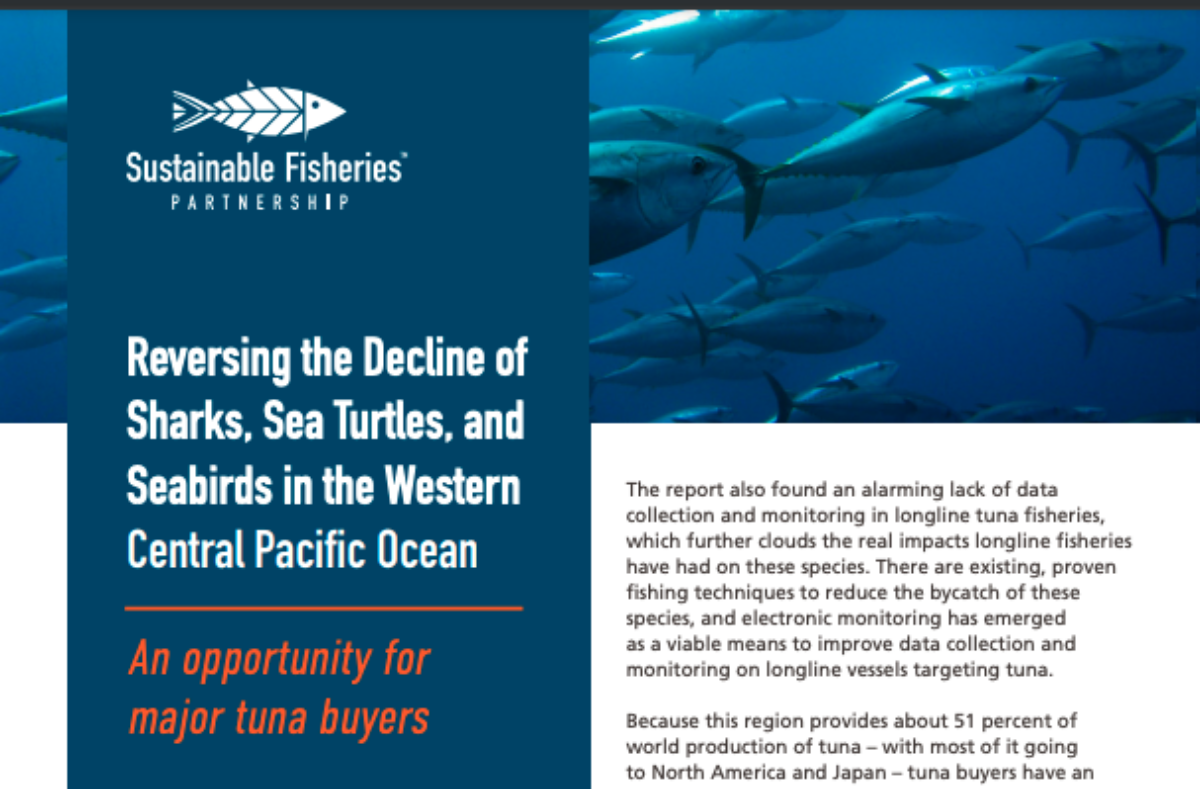Protecting Ocean Wildlife
Reducing bycatch in Pacific Ocean longline tuna fisheries
Major tuna buyers can reverse the decline of sharks, sea turtles, and seabirds in the Western Central Pacific Ocean.
Research from Sustainable Fisheries Partnership highlights the impacts of commercial tuna longline fishing on endangered, threatened, and protected (ETP) species in the Western Central Pacific Ocean (WCPO). The report found a profound loss of nature in the region, where several species of sharks, seabirds, and sea turtles have declined by 70 percent or more.
Longline fishing has one of the highest rates of bycatch among the gear types used in commercial tuna fisheries. But, there are existing, proven best practices that can reduce bycatch, including using circle hooks, setting lines at night, and eliminating wire leaders.
Improvements in fishing practices could substantially reduce threats to vulnerable marine wildlife that share habitat with tuna.
Read the research summary or the full technical report.
SFP recommends that buyers of longline-caught canned and fresh/frozen tuna from the Western Central Pacific Ocean:
- Require that best practices in bycatch mitigation from source tuna fisheries are implemented by 2025.
- Require that source tuna longline fisheries have complete observation coverage of vessels, with 50-percent coverage (human and electronic combined) by 2025 and 100 percent by 2030.
SFP partners commit to reduce bycatch in their tuna supply chains
Read more about Walmart’s commitment to source exclusively from tuna vessels that have 100% observer monitoring by 2027.
As part of Thai Union’s new SeaChange 2030 commitment to biodiversity, 100% of vessels they source from will implement best practices to protect endangered, threatened, and protected species by 2030.
“The Western Central Pacific Ocean is an area of high bycatch risk for many seabirds and other vulnerable marine animals, and we welcome this report from SFP. Highly effective solutions exist that can rapidly reduce bycatch when adopted as part of fishing operations. This report outlines clear, targeted actions for the supply chain which, if implemented, have the potential to reverse the population declines in vulnerable seabirds.”
– Oli Yates, Head, International Marine Programme, Royal Society for the Protection of Birds
“SFP’s report has highlighted the detrimental loss of nature due to the longline tuna fishery in the Western Central Pacific Ocean. Bycatch from the longline fishery strips the marine environment of key species like sea birds, sharks, and turtles. At Whale and Dolphin Conservation we have been working to end bycatch and have stated before that without proper monitoring using REM (Remote Electronic Monitoring) on fishing vessels, the scope of the issue will never be fully understood, and the removal of ETP species will continue uninhibited. SFP have created an exemplary call to action for retailers and the public to encourage better management of the fishery and the implementation of mitigation and monitoring measures using REM to reduce the needless death of marine animals.”
– Bianca Cisternino, Bycatch Coordinator, Whale & Dolphin Conservation
Reduce bycatch in tuna fisheries
To learn more about how you can help reverse the decline of ocean wildlife in the Pacific Ocean, please contact SFP.



